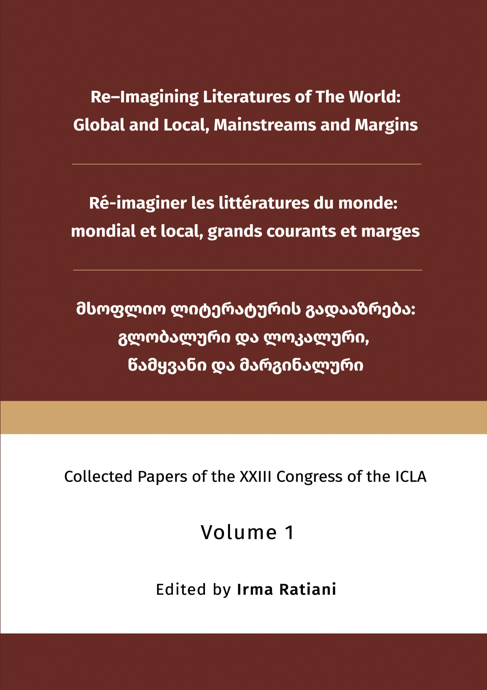Focusing Cultural Affinity Among South Asian Cultures, Cutting Across Geo-spatial Barrier: Rabindranath Tagore and His Multi-dimensional Creativity
Main Article Content
ანოტაცია
In a jet – set globalized world where change is the only con-stant as an aftermath of phenomenal progress in science and tech-nology, we are at ease to interact with various cultures, pertaining to various countries, nations and groups. But it is indeed amazing that even in the nineteenth century, a poet and litterateur of as-tounding magnitude in British ruled – India – Rabindranath Tagore, the first Nobel Laureate of Asia could visualize the idea of a one world across geo – political boundary. Notwithstanding his multiple visits to Europe and America, his fascination for Asian countries has been revealed through his five trips to Japan, China, Ceylon, Persia etc. In his attempt to trace the root of affinity among these cultures of South Asian countries, he had imbibed inspiration from their literature, art and above all lifestyle and this cultural interaction has been delineated in his travelogues like Way to Japan, In Persia etc. The Japanese style of short poem Heiku composed in two/three lines had impressed him so much that he started writing Heiku poems in Bangla. Japanese drawing, flower decoration, tea ceremo-nies etc. were so favorite to him that he requested his nephews to visit Japan just to get training in that art.
The most poignant expression of this cultural interaction between Tagore and South Asian countries was reflected in the idea of Visva Bharati, his cherished institution where South Asian impetus is distinctly visible. The dance technique, choreography and music which he invented for his musical and dance dramas reflect the profound impact of Sri Lankan Candy dance and other techniques. In the same token, Sri Lanka, bent on westernization at the cost of their indigenous culture, could make a cultural revival under the influence of Tagore.
In the present paper, there will be a humble attempt to show how cultural pluralism among diverse South Asian cultures could materialize through the aegis of Tagore, how he could institutiona-lize these diverse influences in his institution through exchange programme of teachers and students and above all how this idea of ingrained oneness was permeated in his creative works, in essays, travelogues, art and fine arts like dance. Tagore’s reception in South Asian countries and the impact exerted by him vice – versa can be cited as an example of cultural assimilation.
